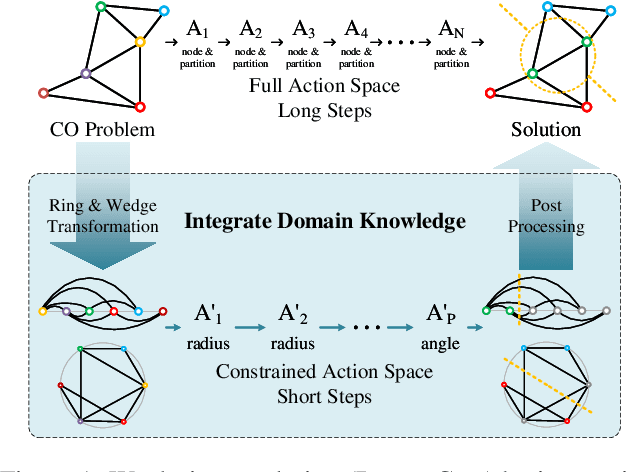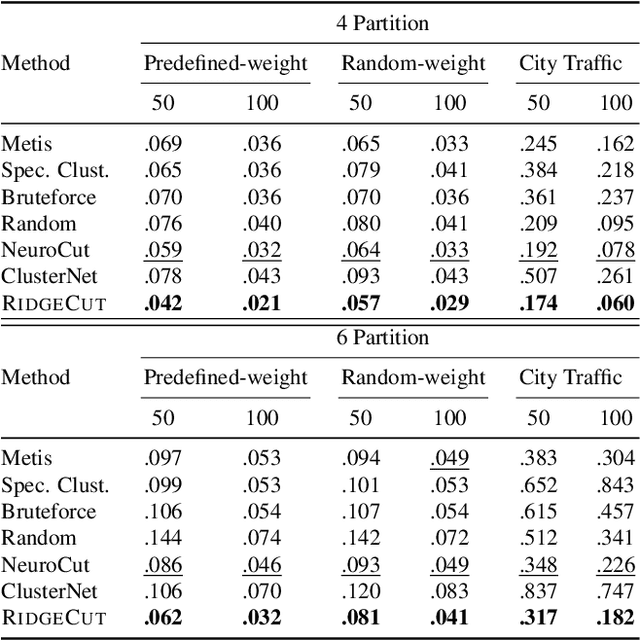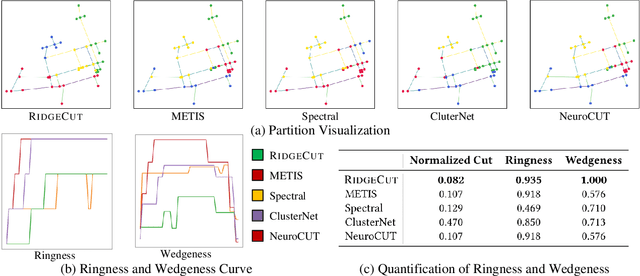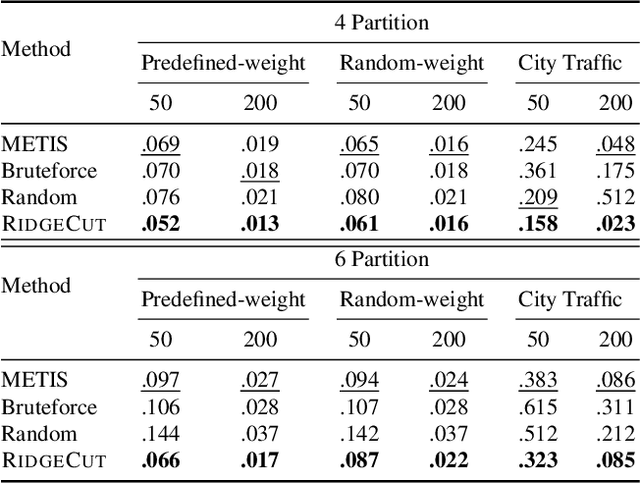Weiwei Sun
Department of Computer Science and Technology, University of Cambridge
ReasonRank: Empowering Passage Ranking with Strong Reasoning Ability
Aug 09, 2025Abstract:Large Language Model (LLM) based listwise ranking has shown superior performance in many passage ranking tasks. With the development of Large Reasoning Models, many studies have demonstrated that step-by-step reasoning during test-time helps improve listwise ranking performance. However, due to the scarcity of reasoning-intensive training data, existing rerankers perform poorly in many complex ranking scenarios and the ranking ability of reasoning-intensive rerankers remains largely underdeveloped. In this paper, we first propose an automated reasoning-intensive training data synthesis framework, which sources training queries and passages from diverse domains and applies DeepSeek-R1 to generate high-quality training labels. A self-consistency data filtering mechanism is designed to ensure the data quality. To empower the listwise reranker with strong reasoning ability, we further propose a two-stage post-training approach, which includes a cold-start supervised fine-tuning (SFT) stage for reasoning pattern learning and a reinforcement learning (RL) stage for further ranking ability enhancement. During the RL stage, based on the nature of listwise ranking, we design a multi-view ranking reward, which is more effective than a ranking metric-based reward. Extensive experiments demonstrate that our trained reasoning-intensive reranker \textbf{ReasonRank} outperforms existing baselines significantly and also achieves much lower latency than pointwise reranker Rank1. \textbf{Through further experiments, our ReasonRank has achieved state-of-the-art (SOTA) performance 40.6 on the BRIGHT leaderboard\footnote{https://brightbenchmark.github.io/}.} Our codes are available at https://github.com/8421BCD/ReasonRank.
Towards Community-Driven Agents for Machine Learning Engineering
Jun 25, 2025Abstract:Large language model-based machine learning (ML) agents have shown great promise in automating ML research. However, existing agents typically operate in isolation on a given research problem, without engaging with the broader research community, where human researchers often gain insights and contribute by sharing knowledge. To bridge this gap, we introduce MLE-Live, a live evaluation framework designed to assess an agent's ability to communicate with and leverage collective knowledge from a simulated Kaggle research community. Building on this framework, we propose CoMind, a novel agent that excels at exchanging insights and developing novel solutions within a community context. CoMind achieves state-of-the-art performance on MLE-Live and outperforms 79.2% human competitors on average across four ongoing Kaggle competitions. Our code is released at https://github.com/comind-ml/CoMind.
Enhancing Training Data Attribution with Representational Optimization
May 24, 2025Abstract:Training data attribution (TDA) methods aim to measure how training data impacts a model's predictions. While gradient-based attribution methods, such as influence functions, offer theoretical grounding, their computational costs make them impractical for large-scale applications. Representation-based approaches are far more scalable, but typically rely on heuristic embeddings that are not optimized for attribution, limiting their fidelity. To address these challenges, we propose AirRep, a scalable, representation-based approach that closes this gap by learning task-specific and model-aligned representations optimized explicitly for TDA. AirRep introduces two key innovations: a trainable encoder tuned for attribution quality, and an attention-based pooling mechanism that enables accurate estimation of group-wise influence. We train AirRep using a ranking objective over automatically constructed training subsets labeled by their empirical effect on target predictions. Experiments on instruction-tuned LLMs demonstrate that AirRep achieves performance on par with state-of-the-art gradient-based approaches while being nearly two orders of magnitude more efficient at inference time. Further analysis highlights its robustness and generalization across tasks and models. Our code is available at https://github.com/sunnweiwei/AirRep.
A Comprehensive Evaluation of Contemporary ML-Based Solvers for Combinatorial Optimization
May 22, 2025Abstract:Machine learning (ML) has demonstrated considerable potential in supporting model design and optimization for combinatorial optimization (CO) problems. However, much of the progress to date has been evaluated on small-scale, synthetic datasets, raising concerns about the practical effectiveness of ML-based solvers in real-world, large-scale CO scenarios. Additionally, many existing CO benchmarks lack sufficient training data, limiting their utility for evaluating data-driven approaches. To address these limitations, we introduce FrontierCO, a comprehensive benchmark that covers eight canonical CO problem types and evaluates 16 representative ML-based solvers--including graph neural networks and large language model (LLM) agents. FrontierCO features challenging instances drawn from industrial applications and frontier CO research, offering both realistic problem difficulty and abundant training data. Our empirical results provide critical insights into the strengths and limitations of current ML methods, helping to guide more robust and practically relevant advances at the intersection of machine learning and combinatorial optimization. Our data is available at https://huggingface.co/datasets/CO-Bench/FrontierCO.
Learning Spatio-Temporal Dynamics for Trajectory Recovery via Time-Aware Transformer
May 20, 2025Abstract:In real-world applications, GPS trajectories often suffer from low sampling rates, with large and irregular intervals between consecutive GPS points. This sparse characteristic presents challenges for their direct use in GPS-based systems. This paper addresses the task of map-constrained trajectory recovery, aiming to enhance trajectory sampling rates of GPS trajectories. Previous studies commonly adopt a sequence-to-sequence framework, where an encoder captures the trajectory patterns and a decoder reconstructs the target trajectory. Within this framework, effectively representing the road network and extracting relevant trajectory features are crucial for overall performance. Despite advancements in these models, they fail to fully leverage the complex spatio-temporal dynamics present in both the trajectory and the road network. To overcome these limitations, we categorize the spatio-temporal dynamics of trajectory data into two distinct aspects: spatial-temporal traffic dynamics and trajectory dynamics. Furthermore, We propose TedTrajRec, a novel method for trajectory recovery. To capture spatio-temporal traffic dynamics, we introduce PD-GNN, which models periodic patterns and learns topologically aware dynamics concurrently for each road segment. For spatio-temporal trajectory dynamics, we present TedFormer, a time-aware Transformer that incorporates temporal dynamics for each GPS location by integrating closed-form neural ordinary differential equations into the attention mechanism. This allows TedFormer to effectively handle irregularly sampled data. Extensive experiments on three real-world datasets demonstrate the superior performance of TedTrajRec. The code is publicly available at https://github.com/ysygMhdxw/TEDTrajRec/.
Solving Normalized Cut Problem with Constrained Action Space
May 20, 2025



Abstract:Reinforcement Learning (RL) has emerged as an important paradigm to solve combinatorial optimization problems primarily due to its ability to learn heuristics that can generalize across problem instances. However, integrating external knowledge that will steer combinatorial optimization problem solutions towards domain appropriate outcomes remains an extremely challenging task. In this paper, we propose the first RL solution that uses constrained action spaces to guide the normalized cut problem towards pre-defined template instances. Using transportation networks as an example domain, we create a Wedge and Ring Transformer that results in graph partitions that are shaped in form of Wedges and Rings and which are likely to be closer to natural optimal partitions. However, our approach is general as it is based on principles that can be generalized to other domains.
CodePDE: An Inference Framework for LLM-driven PDE Solver Generation
May 13, 2025Abstract:Partial differential equations (PDEs) are fundamental to modeling physical systems, yet solving them remains a complex challenge. Traditional numerical solvers rely on expert knowledge to implement and are computationally expensive, while neural-network-based solvers require large training datasets and often lack interpretability. In this work, we frame PDE solving as a code generation task and introduce CodePDE, the first inference framework for generating PDE solvers using large language models (LLMs). Leveraging advanced inference-time algorithms and scaling strategies, CodePDE unlocks critical capacities of LLM for PDE solving: reasoning, debugging, selfrefinement, and test-time scaling -- all without task-specific tuning. CodePDE achieves superhuman performance across a range of representative PDE problems. We also present a systematic empirical analysis of LLM generated solvers, analyzing their accuracy, efficiency, and numerical scheme choices. Our findings highlight the promise and the current limitations of LLMs in PDE solving, offering a new perspective on solver design and opportunities for future model development. Our code is available at https://github.com/LithiumDA/CodePDE.
Direct Retrieval-augmented Optimization: Synergizing Knowledge Selection and Language Models
May 05, 2025Abstract:Retrieval-augmented generation (RAG) integrates large language models ( LLM s) with retrievers to access external knowledge, improving the factuality of LLM generation in knowledge-grounded tasks. To optimize the RAG performance, most previous work independently fine-tunes the retriever to adapt to frozen LLM s or trains the LLMs to use documents retrieved by off-the-shelf retrievers, lacking end-to-end training supervision. Recent work addresses this limitation by jointly training these two components but relies on overly simplifying assumptions of document independence, which has been criticized for being far from real-world scenarios. Thus, effectively optimizing the overall RAG performance remains a critical challenge. We propose a direct retrieval-augmented optimization framework, named DRO, that enables end-to-end training of two key components: (i) a generative knowledge selection model and (ii) an LLM generator. DRO alternates between two phases: (i) document permutation estimation and (ii) re-weighted maximization, progressively improving RAG components through a variational approach. In the estimation step, we treat document permutation as a latent variable and directly estimate its distribution from the selection model by applying an importance sampling strategy. In the maximization step, we calibrate the optimization expectation using importance weights and jointly train the selection model and LLM generator. Our theoretical analysis reveals that DRO is analogous to policy-gradient methods in reinforcement learning. Extensive experiments conducted on five datasets illustrate that DRO outperforms the best baseline with 5%-15% improvements in EM and F1. We also provide in-depth experiments to qualitatively analyze the stability, convergence, and variance of DRO.
Replication and Exploration of Generative Retrieval over Dynamic Corpora
Apr 24, 2025Abstract:Generative retrieval (GR) has emerged as a promising paradigm in information retrieval (IR). However, most existing GR models are developed and evaluated using a static document collection, and their performance in dynamic corpora where document collections evolve continuously is rarely studied. In this paper, we first reproduce and systematically evaluate various representative GR approaches over dynamic corpora. Through extensive experiments, we reveal that existing GR models with \textit{text-based} docids show superior generalization to unseen documents. We observe that the more fine-grained the docid design in the GR model, the better its performance over dynamic corpora, surpassing BM25 and even being comparable to dense retrieval methods. While GR models with \textit{numeric-based} docids show high efficiency, their performance drops significantly over dynamic corpora. Furthermore, our experiments find that the underperformance of numeric-based docids is partly due to their excessive tendency toward the initial document set, which likely results from overfitting on the training set. We then conduct an in-depth analysis of the best-performing GR methods. We identify three critical advantages of text-based docids in dynamic corpora: (i) Semantic alignment with language models' pretrained knowledge, (ii) Fine-grained docid design, and (iii) High lexical diversity. Building on these insights, we finally propose a novel multi-docid design that leverages both the efficiency of numeric-based docids and the effectiveness of text-based docids, achieving improved performance in dynamic corpus without requiring additional retraining. Our work offers empirical evidence for advancing GR methods over dynamic corpora and paves the way for developing more generalized yet efficient GR models in real-world search engines.
LLM4Ranking: An Easy-to-use Framework of Utilizing Large Language Models for Document Reranking
Apr 10, 2025



Abstract:Utilizing large language models (LLMs) for document reranking has been a popular and promising research direction in recent years, many studies are dedicated to improving the performance and efficiency of using LLMs for reranking. Besides, it can also be applied in many real-world applications, such as search engines or retrieval-augmented generation. In response to the growing demand for research and application in practice, we introduce a unified framework, \textbf{LLM4Ranking}, which enables users to adopt different ranking methods using open-source or closed-source API-based LLMs. Our framework provides a simple and extensible interface for document reranking with LLMs, as well as easy-to-use evaluation and fine-tuning scripts for this task. We conducted experiments based on this framework and evaluated various models and methods on several widely used datasets, providing reproducibility results on utilizing LLMs for document reranking. Our code is publicly available at https://github.com/liuqi6777/llm4ranking.
 Add to Chrome
Add to Chrome Add to Firefox
Add to Firefox Add to Edge
Add to Edge